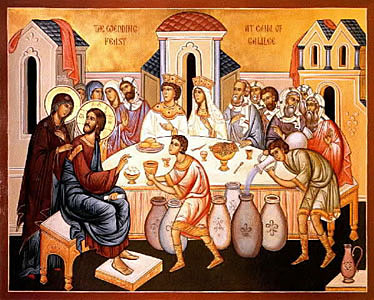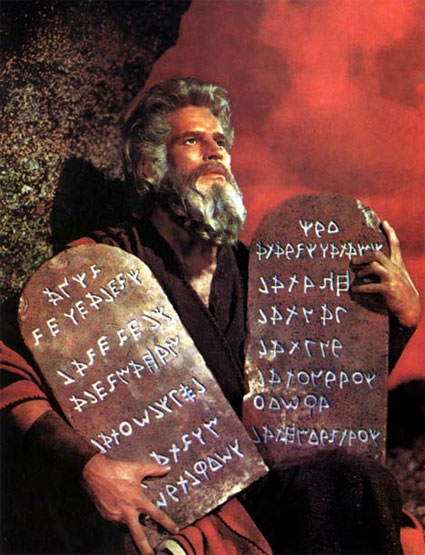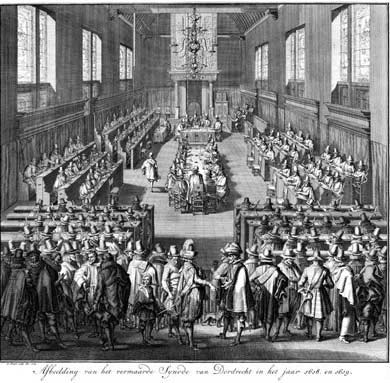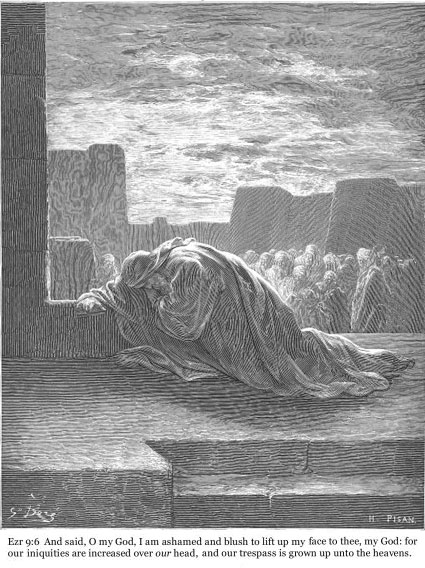Naked Noah
“and their faces were backwards so that they did not see their father’s nakedness” (Gen. 9:23)
James Jordan has some fascinating comments on Ham’s sin in Genesis 19:
“and their faces were backwards so that they did not see their father’s nakedness” (Gen. 9:23)
James Jordan has some fascinating comments on Ham’s sin in Genesis 19:
or Touch Not, Taste Not, Handle Not II

The dietary Laws given to Moses were an expansion of the command given to Adam. It is the self-denial of priestly obedience to God. Adam wasn’t ready for the tree of judicial responsibility (kingdom) but he seized it.
In the greater Bible picture, Israel’s history (from Moses) is this period of priestly obedience. But Jesus came and reversed Adam’s failure. Consequently the dietary laws are revoked, and with greater maturity, the people of God (through the first century death of Israel and her resurrection as the church) now, like Jesus, have the judicial wisdom of the Spirit, and the power to eat unclean things (Gentiles), consume them and make them clean. Only the power of resurrection can enter a room with a corpse in it, touch lepers and feast on Gentile meats and not be made unclean, but instead make the unclean clean by consuming it. This is the power of the New Covenant.
There are two kinds of whiteness in the Bible, and an understanding of this explains a great deal. There is the whiteness of covering and the whiteness of uncovering. And, as mentioned, the Bible makes a great deal out of the concept of covering.
Bone Collector
Purge me with hyssop, and I shall be clean; Wash me, and I shall be whiter than snow.
Touching a corpse made an Israelite unclean. The remains of those slain in battle were marked with lime for two reasons: so that they could be avoided by the clean, and so they could be gathered up and burned to lime by the bone collectors. Jesus said that the righteousness of the Pharisees was like a whitewashed sepulchre. Not only were they full of the ceremonial uncleanness of broken Covenant, their so-called righteousness was actually a mark from God upon them. They would be gathered to their people not by the Father sending His angels to the four corners of the Land, but by the father of lies and his scavengers sent by God to clean the wound.
This image goes right back to Genesis. Like the angels, the Covenant scavengers, though demonic, are also God’s servants. They are the raven of Noah surviving on floating corpses until the water goes down; they are the scavenging dogs that lick up Jezebel’s blood; they are the maggots in misused manna and abandoned grapes (false bread and wine); they are the unclean birds and animals that screech and howl inside the corpse of a defeated Babylon; they are worms inside Herod ‘enthroned’ as a human Gehenna.
The whiteness of the Pharisees was the whiteness of Miriam’s and Gehazi’s skin-plague. It is the whiteness of flesh and bones exposed as unclean to the eyes of God. Satan himself appeared as an angel of light, but like the Pharisees, he was a false lightbearer, a tutor guiding his children the wrong way.

Moses listened on the mountain as God spoke. He digested the law, and repeated it to the next generation in Deuteronomy, partly in a song that he taught them.
Moses’ tabernacle was silent. It was misused and dismembered, then reconstructed in the ‘next generation’ as the Tabernacle of David, with music and Gentile singers.
 The Synod of Dort
The Synod of Dort
If you’ve ever been to a Synod, you’ll quickly find out that “truth” is determined by numbers.
So remarked a Catholic contributor on a Protestant forum recently. Is this a fair criticism of Protestant disunity? How should we Protestants reply? Thanks to James Jordan’s teaching, I think I can offer an answer.

Ezra took a great risk to bring Levites and riches to the Temple from Persia. Mixed marriages were suddenly of more concern, which poses a difficult question. Things seem to be heading backwards—away from the New Testament rather than towards it.
 or ‘How to Raise Monsters’
or ‘How to Raise Monsters’
Peter Leithart points out that the very early verses in John’s gospel can be corresponded with the Creation week:
DAY 1: The Light of the World (1:1-18)
DAY 2: The Baptism of John (1:19-28)
DAY 3: Jesus’ Baptism (1:29-34): dry land emerges from water, “the next day.”
DAY 4: John Points Disciples to Jesus (1:35-39)
DAY 5: Disciples Bring Brothers (1:40-42)
DAY 6: Jesus and Nathanael (1:43-51): “the following day,” the first day
DAY 7: [nothing]: Sabbath; the second day
DAY 8: The Wedding at Cana (2:1-11): “the third day”
More detail here.
It seems to be the case with many Bible books that they start off with a small seven, which is part of a larger one, which is then part of a great seven that structures the book (among other internal structures).
As with Matthew’s gospel, the next level in John covers the first few chapters, and might even solve a textual difficulty:
“And I cut off the three shepherds in one month…” Zechariah 11:8
Who are these mysterious three shepherds?
Theories abound, most prominently that the Lord refers to the offices of prophet, priest and king in first century Judah. Perhaps, as with Zechariah 14, the pattern of Israel’s feasts (as outlined in Leviticus 23) structures Zechariah 11. If you look carefully you will also see the Creation week.
The content of this post has been revised and included in Bible Matrix II: The Covenant Key.
“…and I came to Jerusalem and discovered the evil that Eliashib had done for Tobiah, in preparing a room for him in the courts of the house of God. And it grieved me bitterly; therefore I threw all the household goods of Tobiah out of the room. Then I commanded them to cleanse the rooms; and I brought back into them the articles of the house of God, with the grain offering and the frankincense.” Nehemiah 13:7-9
After the failure of Israel’s kings and their adulterous priesthood, God established new worship in the “wilderness” of Babylon under Daniel and Ezekiel. When Babylon fell, He brought His new Jerusalem, like a pure bride, back to the mountain of God.